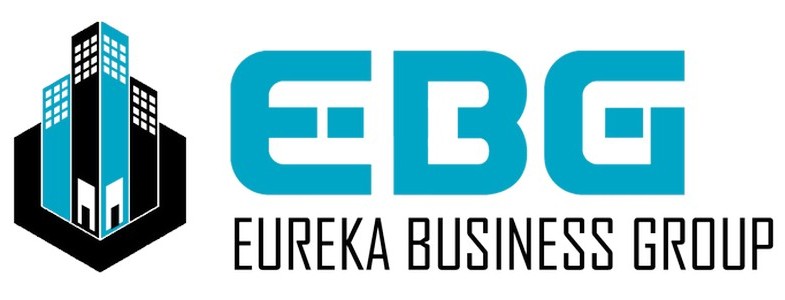- Home
- Retail
- Retail Investors Resources
- Shopping Center Investing 101: How to Determine the Value of a Shopping Center
Shopping Center Investing 101: How to Determine the Value of a Shopping Center
Hey everybody, Joseph Gozlan with Eureka Business Group. And we created a new video series for you, calling Shopping Center Investing 101. And in this video series, we’re going to teach you how to invest in shopping centers, and how to underwrite and value those, and what common mistakes to avoid when you invest in shopping centers.
In this video, we’re going to talk about how to determine the value of a shopping center. There’s a lot of things to consider, but
there’s a very simple formula that is true to every commercial real estate asset. It doesn’t matter if it’s a shopping center or if it’s a warehouse or even multifamily. It doesn’t matter if it’s in Minnesota or if it’s in Texas. It doesn’t It’s the same formula. The formula is simple. NOI divided by cap rate equals value.
Lots of different acronyms here. Let’s break it down.
The first part we’re going to talk about is the NOI. NOI stands for Net Operating Income. What does that mean? It means all the income that comes into the shopping center less all of the operational expenses. Remember that word, operational, for the operational expenses because we’ll get back to it. So let’s start with the income side of things.
What income does the shopping center owner get when they invest in shopping centers? The first thing obviously is rent, but there’s other components that the tenant sometimes pay and the other income streams that a shopping center owner has. The first one is. Tenant reimbursement. Sometimes, depending on your lease structures, the tenant might be responsible reimbursing you for property taxes, for their share of the expenses, for their share of the maintenance, for their share of the insurance expense, and so on.
So, tenant reimbursement is one of the most common things we see in the line items for income that is beyond just the base rent. Other income streams we’ve seen is leasing a billboard. We’ve seen shopping center owners have a cell tower on the property and they get money from that.
We’ve seen them put vending machines. We’ve seen them lease open parking lot for a farmer’s market. On the weekends, we’ve seen all kinds of creative things where shopping center owners can create other additional income streams. And those all add up to your income side of the NOI. On the other side of the NOI, we have expenses.
And remember I said earlier operational expenses, the definition of an operational expense is something that happens in the normal operation of the property. Think about things we do every year, every month, every week, every day, not things that happen once in a blue moon. So an example for operational expenses would be property taxes.
I have to pay those every year. Insurance. I have to pay every year. Those are operational expenses. I cannot operate the property if I haven’t paid my property taxes or if I don’t have insurance. Things that we have in operational expenses is maintaining the building. If an exterior light goes out, I have to repair it. Maybe there’s a roof leak. I have to repair it and so on. These are operational expenses because these are normal for the operations of the property. What is not operational expenses? For example, replacing a roof. If I have to replace a roof, that’s something that doesn’t happen every year, hopefully. This is something that we do every once in a blue moon.
Every 10 years. Every 15 years. Whatever it is. But it doesn’t happen normally. It’s not part of the normal operations of the shopping center. That is what composed my NOI. We talked about the income side, we talked about our operational side of the expenses.
That’s my NOI. Income less operational expenses.
The other acronym I mentioned earlier was cap rate. What is cap rate? Cap rate is short for capitalization rate. And that is a percentage 2%, 5%, 10%, 20%, whatever the number is. That number is determined by a lot of external factors that are not determined by the specific shopping center.
It belongs to the market.
A shopping center in Minnesota might have a different cap rate than a shopping center in Dallas, Texas. Two different things. So we have to figure out and this is where a professional like a broker can help you. To determine the appropriate cap rate to use in your formula based on the specific shopping center, in the specific neighborhood, in the specific city, and the time that you’re buying it. One of the factor that determined cap rates is availability of money are the banks lending money or they’re holding back. Is it easy to get a loan? Is that how to get a loan?
What are the interest rates in the market? Are they high? Are they low? Is there a higher demand for retail in 2025 or is there higher demand for warehouses in 2025? Every little thing like this is impacting the cap rate. So the cap rate is both micro in the environment you’re buying in and then macro.
What’s the global economy is doing? What is the interest rates in the market? So it’s a combination of things. That’s why it’s important to consult a professional that understands the specific market you’re investing in. So, here’s the formula. Let’s say I have a property that makes $100,000 in NOI, and the cap rate in that specific market is 5% for that asset class, then my valuation is $100,000 divided by 5% cap rate, that’s $2,000,000. Let’s see how things are moving and changing. So, if I have the same property, $100,000 NOI, but the market changes from 5% cap rate to 10% cap rate.
Now my property is $100,000 divided by 10%. That’s only $1,000,000. Notice the difference. We went from 5% cap rate to 10% cap rate and the property value went from $2,000,000 down to $1,000,000. That is the inverse relationship between cap rate and value.
You’ll hear investor talk about it, or you’ll hear it on the news. People say cap rates have compressed or expanded. How does that impact?
So because of that inverse relationship, when a cap rate is compressing, the values go up and where the cap rates are expanding, the values go down. That’s the inverse relationship we were mentioning.
Another thing that is important when we’re underwriting and valuing a property is to look at what’s behind that NOI number. Because taking an NOI number is great, and that’s a rough number that we can use for calculation, but we want to dig deeper behind that number and understand what’s driving it.
Follow our series of videos because we’re going to dig deeper into how to look at the income streams, how to look at the expenses, what about CapEx and so on. So all of that is in the next videos. But for now, let’s just mention one thing that is critical and that is the
market rents vs the actual rents
on the property.
So same property we used as an example before, a $100K NOI. Let’s say the average rent on the property is $20 per square foot. But if the market is at $15, that’s an issue. Why is that an issue? That property is making a lot more money than everybody else. No, it’s an issue because if one of those tenants that are paying S20 per square foot moves out, I’m not going to be able to rent it again for $20K if everybody else is at $15.
That’s the competition. So I’m going to have to lease it to the next tenant at $15 per square foot, and I’m now I’m losing value. So making sure that the property rents are within line of the market is important. And when I say within line in the market does not mean that it has to hit the average of the market.
It needs to be similar to the competition. And I’m not comparing an A class premium shopping center that has Gucci and Tiffany in the shopping center to a C class shopping center in a rougher neighborhood. That’s not what I mean. I meant comparable. If I have to lease this space in my shopping center, what is my direct competition listing for?
That’s the number I’m valuing against.
So the 2 most important tools you can use when you value a shopping center is one. a professional broker, somebody that knows what they’re doing, somebody that is in that asset class in that area that specializes in retail, for example, because we’re talking about shopping centers to help you understand the market conditions.
The market rate. Is the NOI they’re presenting reasonable or not? That’s very important. The other most important tool you can have is an Excel file. I tell all of our investors, we don’t make decisions in our gut, we make decisions with an Excel file. Of course your gut feeling is super important and you should always listen to your gut.
But you got to feed it the right information and the right information has to go into an Excel file and the numbers are determining factor when we look at investment
Another very big factor in determining the cap rate is who’s the tenant? If I am buying a building that has a McDonald’s or a Chick-fil-a in it, I’m obviously going to have a much stronger tenant, a stronger corporate guarantee. And that property is going to be traded at a lower cap rate than a strip mall that has mom and pop business, small business owners.
Versus a shopping center that has national brand franchises in it. So who are my tenants in that shopping centers is also a determining factor in the valuation of the property. The stronger the tenant, the stronger the credit valuation of that tenant, the lower the cap rate that we’re going to pay for it, which means higher value.
Remember inverse relation.
So the stronger the tenant. The more value it’s given to their strength and the stability and how lower the risk is when you buy the shopping center, thus it commands a higher price.
Okay, let’s recap. We had NOI divided by cap rate equals value. We learned that determining the source of the NOI is important. We also determined that cap rate is something that we really need to lean on somebody that understands the market and understands the asset class in order to determine what’s the right cap rate to use in the calculation.
And that’s how we determine the value of the shopping center. We’re looking at investing in to determine that.
In the next videos in the series, we’re going to dig deep. We’re going to go into income streams. We’re going to go into expenses. We’re going to go into how do we finance this thing? How do we look at capitalization rates? How do we determine capex that needs to be factored into this thing?
In order to decide if this is a shopping center, we want to invest in or not. So stay tuned, click on the links below. We’ll make sure that there are links to the next videos.
And if there are any questions about how to determine the value of a shopping center that we haven’t answered in this video series, please leave them in the comments below and we’ll be happy to answer them for you.

Joseph Gozlan, Managing Principal
Email: Joseph@EBGTexas.com
Direct: (903) 600-0616

